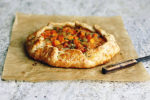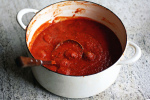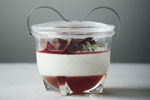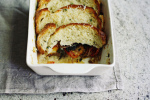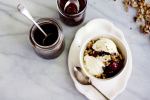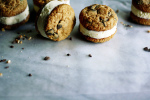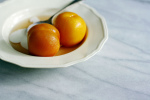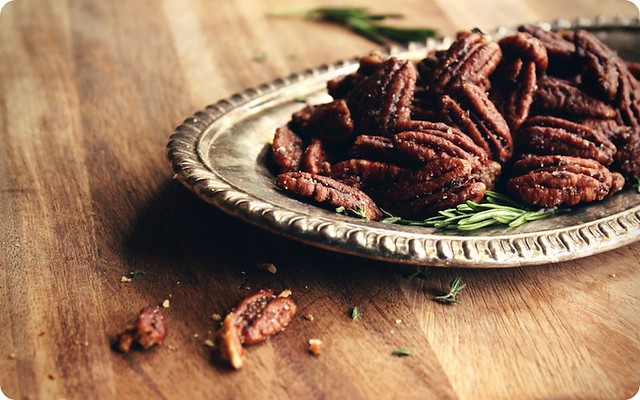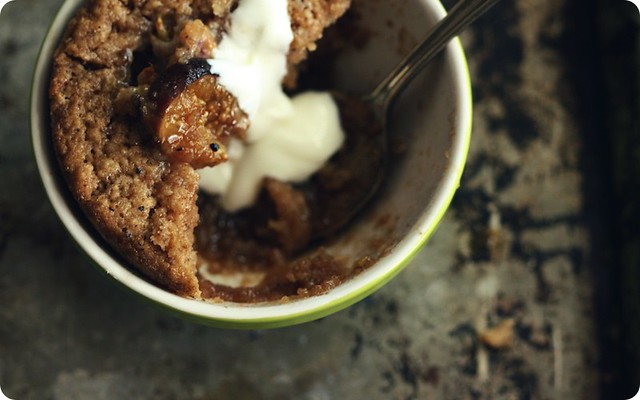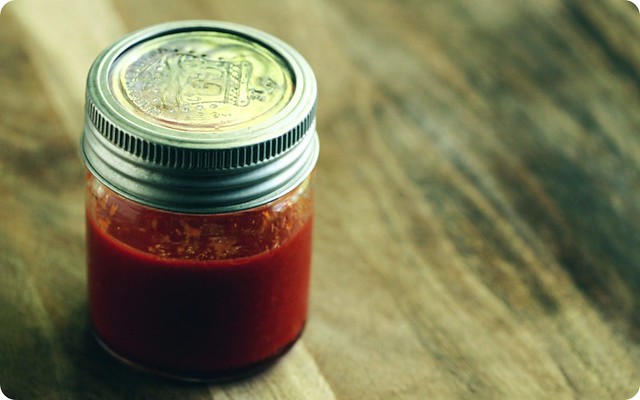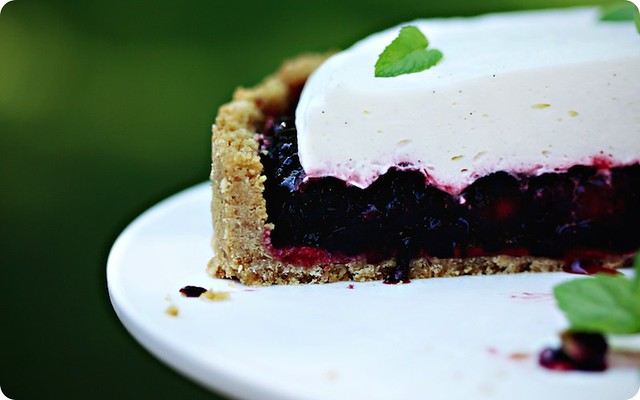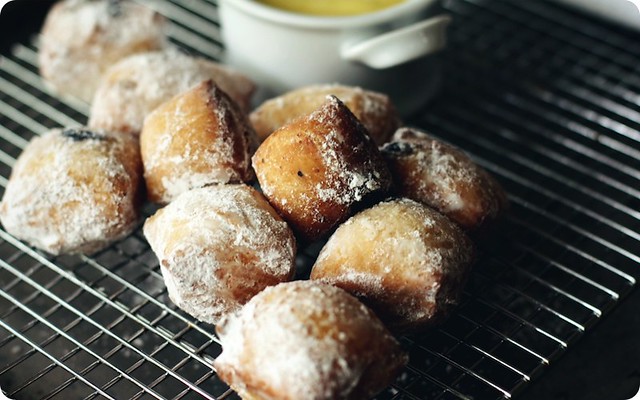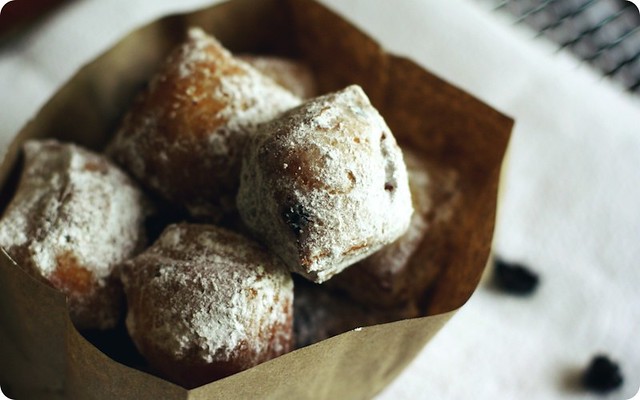Like a herald
 Tuesday, October 26, 2010 at 10:06AM
Tuesday, October 26, 2010 at 10:06AM Canadian Thanksgiving was two weeks ago. It landed perfectly, squarely, on the start of a week that was particularly fine. On that day, my father carved the roast bird, my brother made a mushroom gravy for which I immediately begged the recipe, the house was full, and despite some autumn coughs nagging little ones, it felt a grand affair.
It felt like a herald. It felt like my favourite holiday of the year, which it is.
The next day, in that funny routine of the morning after, I puttered about the kitchen considering a bout of dietetic austerity to balance out the (glorious) feast of the night before.
Fueling these virtuous ideas in my tired mind were immodest handfuls of candied pecans. It wasn't even nine o'clock in the morning and I was crunching my way through a jar in the pantry like a crazed chipmunk. Temperance has never been one of my strong points.
The nuts had been a late entry onto our celebratory menu. On a last-minute run to the market I'd decided additional provisions were required for guests to crunchily munch while we tasked ourselves with the preparation of the main event. I settled on pecan halves without a set inspiration; an unspecific thought of roasting and salting was about as far as I'd gone.
It was the abundance of herbs on the counter and a long-standing addiction that took the pecans further than that initial route - all the way to New York city, into a wardrobe of sugar and rosemary with the addition of thyme, and enough cayenne for some downtown sparkle. As an ensemble the combination hints at boskiness against an urban sensibility - a woolen dress paired with a bright red lip.
Now my first go I should tell you, as seems habit with me, was not a unmitigated success. The seasoning was bang on but I'd rushed the baking - the coating was ever so slightly sticky. Thank goodness for my family, kind souls they are, nobody complained.
Being ever the fusspot I felt that stickiness had to be addressed. After the plates were cleared and the house had emptied, the remaining nuts went back onto a sheet pan and into the oven. Five more minutes tacked on to the baking. This time, once cooled, they snapped.
That's the trick for early autumn. The coat you wear won't be down or duffle, and the same is true for pecans on Thanksgiving. Their dressing was thin, a sheer, shining wrap, that caught, pleating and folding around the craggy profile of the nuts. Tailor-made garb for an October evening.
Or an October morning as well, if we're keeping track.
Rosemary and Thyme Candied Pecans
With inspiration from the spiced nuts served at the Union Square Café in New York City. It will look as though there too much glaze as the nuts go in the oven - don't fret. As they bake the syrup will thicken and gather around the pecans. By the time they're done pan will be almost dry.
Ingredients
2 tablespoons unsalted butter
1/4 cup maple syrup
2 tablespoons demerara sugar
3/4 teaspoon finely minced fresh thyme
1/2 teaspoon finely minced fresh rosemary
1/4 teaspoon cayenne
Scant 1/8 teaspoon ground cinnamon
1 teaspoon coarse salt
1 pound pecan halves
Fleur de sel or other sea salt, to finish (optional)
Preheat an oven to 375ºF (190ºC). Line a standard half sheet pan with parchment paper.
In a small saucepan over medium heat, melt the butter with the maple syrup and Demerara. Once melted, remove from the heat and stir in the herbs, spices and salt.
Toss the pecans with the butter mixture in a large bowl, making sure to coat well. Spread nuts in a single layer on the prepared pan.
Bake in the preheated oven, turning occasionally, until the nuts are glazed and shiny with a deep golden colour, around 15 minutes. Upon removing from the oven, sprinkle lightly with fleur de sel if using and stir again.
Cool completely, then store in an airtight container.
Makes 1 pound.
*******
Thanks to Sheri for inviting me to be a part of the "On This Fall Day" series over at The Stir. I am so happy to be part. You can read my entry here if you'd like!
 nuts,
nuts,  pecans in
pecans in  confection,
confection,  snack
snack 

